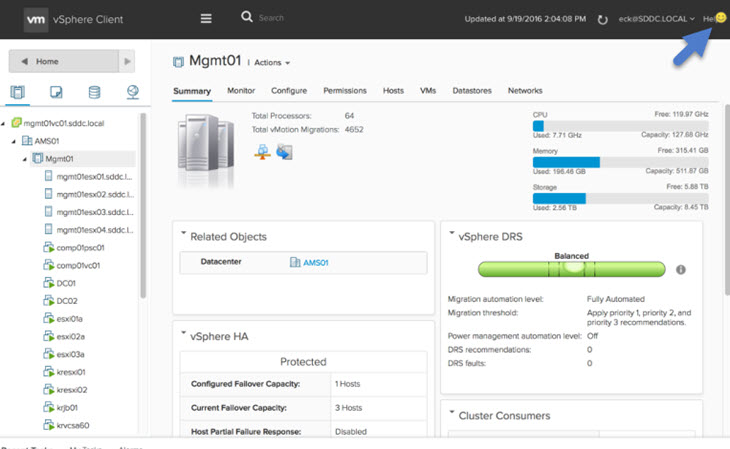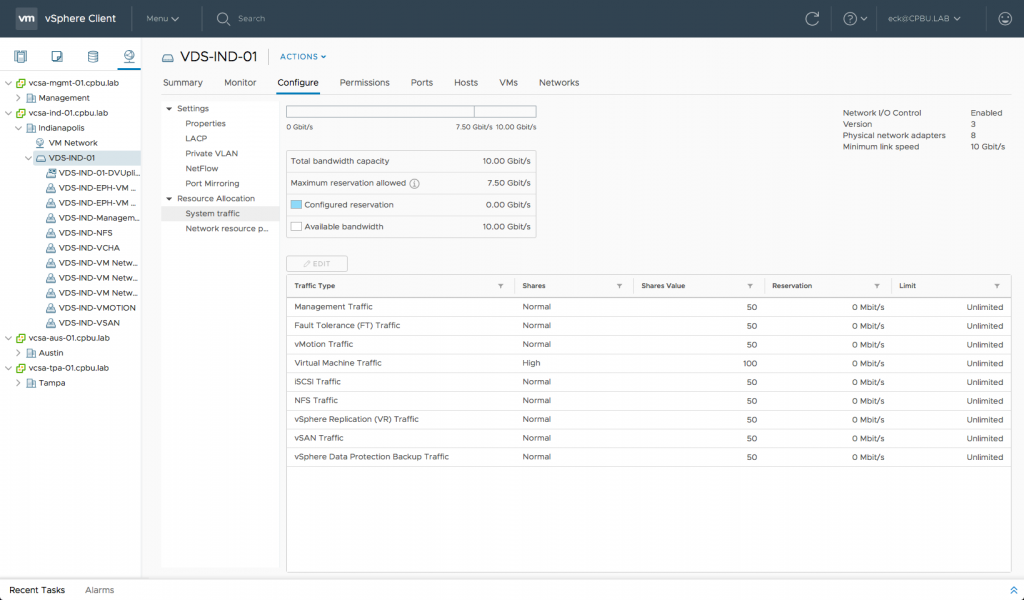

Your public key has been saved in /home/sguyennet/.ssh/id_rsa.pub.


Your identification has been saved in /home/sguyennet/.ssh/idrsa. Leave the passphrase empty.Įnter file in which to save the key (/home/sguyennet/.ssh/id rsa):Ĭreated directory '/home/sguyennet/.ssh'.Įnter passphrase (empty for no passphrase):
Vsphere client 5.5 on ubuntu 16.04 install#
$ sudo apt-get install linux-image-4.15.0-15-generic \ģ5- Allow your user to use sudo without a password.ģ6- Generate a private and a public key on the client machine. You can skip this step if you are not planning to use Cilium as an overlay network for your Kubernetes cluster.
Vsphere client 5.5 on ubuntu 16.04 update#
We will unconfigure it later on.Ģ3- Choose if you would like to encrypt your disk or not.Ģ4- Configure the timezone of the system.Ģ6- Select the disk to install Ubuntu 16.04.Ģ7- Configure a proxy if you are using one to access the Internet.Ģ8- Choose to install the security update automatically.ģ2- Once the virtual machine has rebooted, SSH to it from the client machine.ģ4- Upgrade the kernel to a version above 4.8. $ sudo apt-get install kubectl Configuring the requirements on VMware vSphere Create a Ubuntu 16.04 templateĢ- Enter the name "ubuntu-16.04-terraform-template" as the name of the virtual machine.ģ- Choose the position of the virtual machine.Ĥ- Choose the compatibility of the virtual machine.Ħ- Set the type of the SCSI controller to "VMware Paravirtual".ħ- Select the network of the virtual machine.ĩ- Connect the CD drive when the virtual machine boots.ġ0- Complete the creation of the virtual machine.ġ2- Open the console of the virtual machine.ġ3- Select the language of the installer.ġ8- Configure the network card with a temporary IP. Installing the requirements on the Ubuntu 16.04 client machine The step to configure these will be described later on. We will also need a Ubuntu 16.04 vSphere template and a specific user for the vSphere Cloud Provider. Regarding the Kubernetes worker nodes, we will deploy them on the IP range 10.10.40.120-10.10.40.123. In front of these master nodes, we will deploy a HAProxy load balancer with the IP 10.10.40.113. This machine needs to be on a network that has access to the vCenter API as Terraform will need this to deploy and configure the virtual machines.įor the Kubernetes infrastructure, we are going to deploy three master nodes. This machine will be used to execute the Terraform script and to access the Kubernetes dashboard. You will also need a Ubuntu 16.04 desktop client machine. This will allow us to use the vSphere storage as persistent volumes in the Kubernetes cluster as seen in the article Use vSphere Storage as Kubernetes persistent volumes.įor this lab, you will need a configured VMware vSphere environment. We will take advantage of the fact that our infrastructure will be running on VMware vSphere and that Kubespray supports the configuration of vSphere Cloud Provider. This automation not only supports the deployment, but also adds worker nodes to the Kubernetes cluster, removes worker nodes from the Kubernetes cluster, upgrades the version of Kubernetes, and destroys the Kubernetes cluster. In this lab, we will use Terraform to deploy our infrastructure on VMware vSphere and, in a second stage, Terraform will call Kubespray to install and configure Kubernetes for us. It is composed of Ansible playbook and automates the deployment of a Kubernetes cluster on an existing infrastructure. Kubespray is a Kubernetes incubator project. You are now probably looking for a way to automate the deployment of your lab so you don't have to follow all these painful steps each time you want to deploy a clean environment. If you already completed the tutorials Deploy Kubernetes 1.9 from scratch on VMware vSphere and Install and configure a multi-master Kubernetes cluster with kubeadm, you should have a pretty good understanding of how a multi-master Kubernetes cluster is structured.


 0 kommentar(er)
0 kommentar(er)
